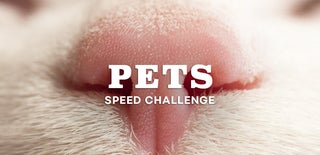Introduction: Petsegrity (bed + Pet + Tensgrity)
I have been working at home since the pandemic started. Tobias, my dog, has been with me in this new way of working. And he loves to have his belly scratched in the process. This leaves me with two options: stretch my self to the floor to reach him or leave him my work chair and use a much less comfortable chair. Of course I love my dog and I always leave him my chair :)
This made me realize that I needed a bed for Tobias but at the height of my chair. And the other day I found tensegrity structures while surfing the internet. That's where the idea came up to make a bed with a slightly out of the ordinary design.
Tensegrity type structures have a wide variety of dimensional and configuration possibilities. They can be customized without limit on the number of pieces and the geometric shapes that can be generated. I choose to do a simple form in this project but I already have ideas to improve it.
Hope you like it.
Supplies
4 wood rod - 3' height - 7/8" diameter
1 Square piece of fabric 60 x 60 cm
1 thread roll, diferent sizes 12 m aprox.
14 gauge wire
8 wood screws
1 blanket (optional)
Tools:
Screw driver
Drill
Cutter
Pliers
Strong fingers (optional)
Step 1: Make a Concept
I used a four-sided figure of approximately 50 cm per side and 50 cm in height with a small twist in the shape as seen in the image. I made a 3D drawing to be able to take measurements of the thread and the wooden rods.
Step 2: Mark and Sew the Fabric
I used a 60cm piece of fabric per side to make room for the seam and folded the corner to allow the wooden rods to pass through and curved the ends to improve the tension of the fabric. When sewing the perimeter, leave a space to insert a 2 m long rope and then join its ends and hide inside the seam
Step 3: Drill the Rods
I drilled three holes in the wooden rods. One at each end to place screws and one that crosses transversely to place the vertical thread that work as a tensioner.
Step 4: Base Rope
I made a closed loop of rope with a 2m perimeter to use at the bottom. I put reinforcements in four places where the rope is attached to the pieces of wood. Then I screwed the rope to the bottom to form the base square.
Step 5: Wire Semicircles and Parts Assembly
I made four semicircles of wire as a support and anchor for the thread. The first tensioner is tied to the corner of the rope that is in the fabric, passes through the transverse hole, surrounds the wire, returns through the hole and ties to the screw that is at the bottom. This step is repeated for all four corners. (Sorry for the image of the process, I forgot to take pictures)
Step 6: Additional Tension Threads
Finally I put four more tension threads between the wooden rods to give more strength to the structure. Originally they were not contemplated but they helped a lot to stability. I also put a tensioner on top of the wooden rods to make a rope perimeter. The space between the rope and the fabric can be filled with pieces of custom fabric, I placed a blanket that turns the thread and goes underneath. This gives a concave shape for the dog to lean on :)
Step 7: Persuade the Dog to Use It
Now just put the dog in bed and see if he likes it. As you can see in the photos it was a huge success! He loves it.
Welcome to the new home office normality. Now I can sit in a comfortable chair and scratch Tobias's belly at the same time.

Participated in the
Pets Speed Challenge







